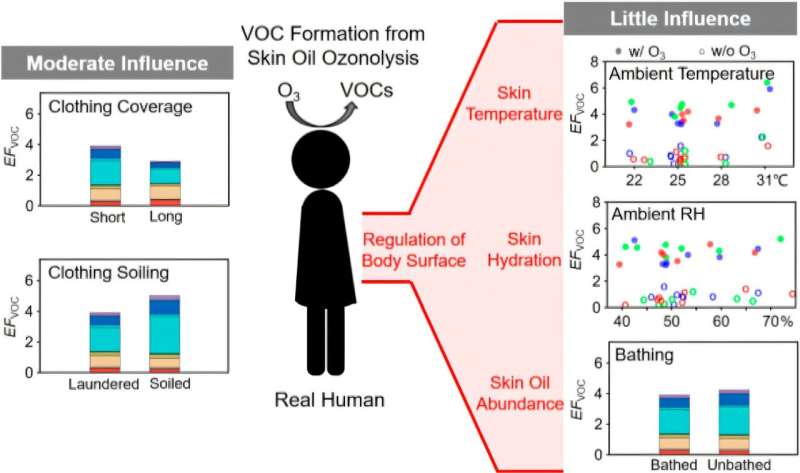
Skin, the body’s primary shield against environmental threats, may also be a source of indoor air pollution. A recent study from Tsinghua University, published in ACS Environmental Au, reveals how human skin oils react with atmospheric ozone to release volatile organic compounds (VOCs), potentially affecting indoor air quality. This research highlights the complex interplay between personal habits and environmental conditions in influencing these emissions.
Conducted by a team of researchers, the study involved three male volunteers exposed to varying scenarios of temperature, humidity, hygiene practices, and clothing choices. The findings indicate that while factors like bathing frequency and indoor humidity have minimal impact, the concentration of ozone in the air is the dominant factor, accounting for over 90% of variations in VOC emissions from skin.
Understanding the Chemistry of Skin and Ozone
Human skin oil is rich in compounds such as squalene and various unsaturated fatty acids, triglycerides, and wax esters, which are highly reactive with ozone. This reaction produces a range of volatile compounds, including decanal, acetone, and geranyl acetone. Previous studies on nonhuman materials suggested that higher humidity and soiled clothing increased VOC levels, but these findings do not fully translate to human skin behavior.
“Results based on nonhuman materials are insightful but may not fully reflect what occurs on the human body,” the researchers note in their publication.
By isolating variables in a controlled setting, this study provides a more comprehensive understanding of how human skin interacts with environmental factors to influence air quality.
Implications of Personal Hygiene and Clothing Choices
The study also explored the effects of personal hygiene and clothing on VOC emissions. It found that not changing clothes for three days increased VOC emissions by approximately 25%, likely due to prolonged contact between skin and fabric. Conversely, refraining from showering showed minimal impact, as the body quickly replenishes skin oils. Interestingly, wearing more clothing reduced VOC emissions by nearly 50% compared to wearing minimal clothing.
This finding suggests that covering more skin may help mitigate the release of VOCs, providing a simple strategy for improving indoor air quality. However, the researchers caution that the study’s small sample size and laboratory conditions may not fully represent real-world scenarios.
Future Research and Broader Implications
While the study reinforces the significance of ozone concentration in VOC emissions, it also opens avenues for further research. The limited sample size and lack of real-time skin measurements highlight the need for additional studies to explore these interactions in more diverse and realistic settings.
The implications of this research extend beyond individual health, touching on broader environmental and public health concerns. As urban areas continue to grapple with air quality issues, understanding the role of human activities and natural processes in indoor pollution becomes increasingly vital.
Yuekun Qu and colleagues emphasize, “Future investigations should consider a wider range of participants and environments to better understand these dynamics.”
In conclusion, this study sheds light on the hidden dynamics of skin oil and ozone interactions, offering insights into personal and environmental factors that influence indoor air quality. As researchers continue to unravel these complex relationships, individuals and policymakers alike can take informed steps to improve air quality and public health.







